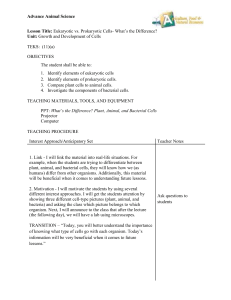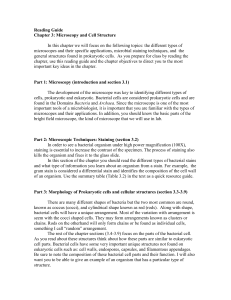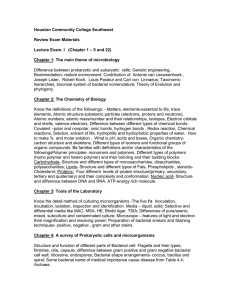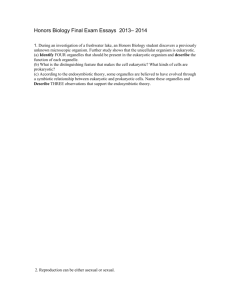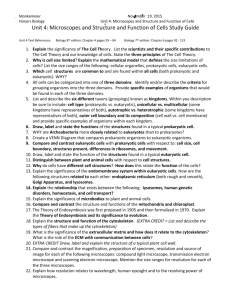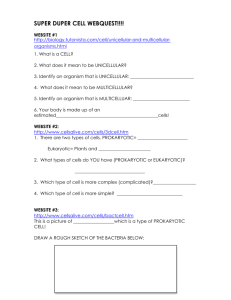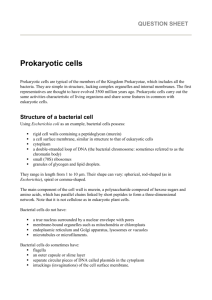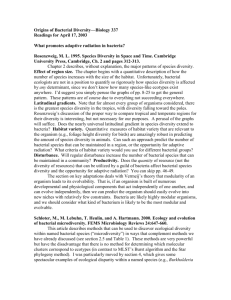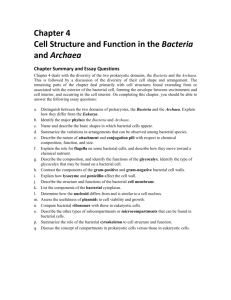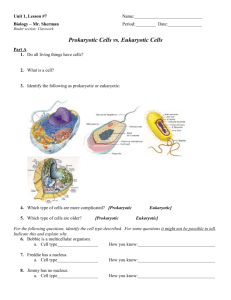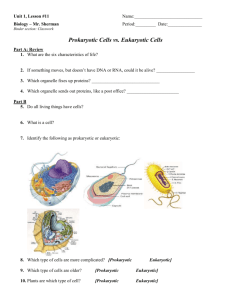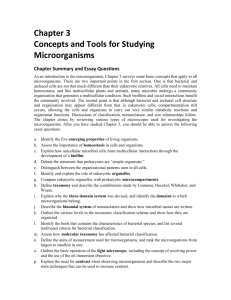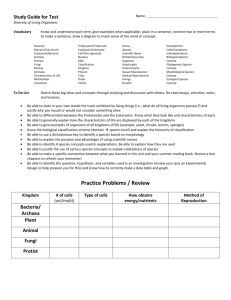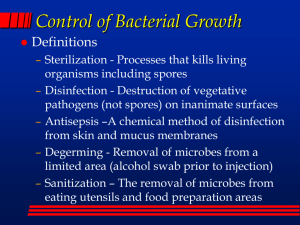Advance Animal Science Lesson Title: Eukaryotic vs. Prokaryotic
advertisement
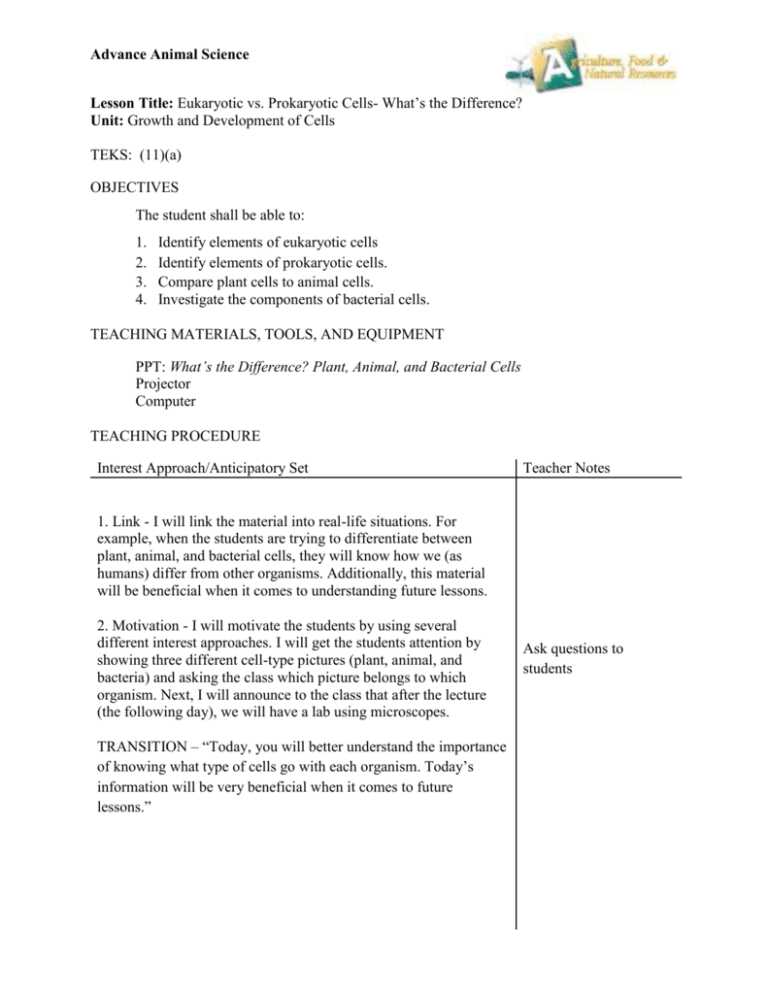
Advance Animal Science Lesson Title: Eukaryotic vs. Prokaryotic Cells- What’s the Difference? Unit: Growth and Development of Cells TEKS: (11)(a) OBJECTIVES The student shall be able to: 1. 2. 3. 4. Identify elements of eukaryotic cells Identify elements of prokaryotic cells. Compare plant cells to animal cells. Investigate the components of bacterial cells. TEACHING MATERIALS, TOOLS, AND EQUIPMENT PPT: What’s the Difference? Plant, Animal, and Bacterial Cells Projector Computer TEACHING PROCEDURE Interest Approach/Anticipatory Set Teacher Notes 1. Link - I will link the material into real-life situations. For example, when the students are trying to differentiate between plant, animal, and bacterial cells, they will know how we (as humans) differ from other organisms. Additionally, this material will be beneficial when it comes to understanding future lessons. 2. Motivation - I will motivate the students by using several different interest approaches. I will get the students attention by showing three different cell-type pictures (plant, animal, and bacteria) and asking the class which picture belongs to which organism. Next, I will announce to the class that after the lecture (the following day), we will have a lab using microscopes. TRANSITION – “Today, you will better understand the importance of knowing what type of cells go with each organism. Today’s information will be very beneficial when it comes to future lessons.” Ask questions to students Advance Animal Science Teaching Plan and Strategy / Presentation of New Material Teacher Notes 1st 15 minutes: Techniques and media used to teach with: -Interest Approach Show three different cell-type pictures (plant, animal, and bacteria) and ask the class which picture belongs to which organism. Announce to the class that after the lecture (the following day), we will have a lab using microscopes. Power point Then I would state, “Today, you will better understand the importance of knowing what type of cells go with each organism. Today’s information will be very beneficial when it comes to future lessons”. -State Objectives Objective 1: Identify elements of eukaryotic cells Objective 2: Identify elements of prokaryotic cells. Objective 3: Compare plant cells to animal cells. Objective 4: Investigate the components of bacterial cells. -Present power point: What’s the Difference? Plant, Animal, and Bacterial Cells Incorporate “higher thinking” questions 2nd 15 minutes: - Review objectives -Closure 3rd 15 minutes: -Work in SAE Record Books for remainder of class period. ENGAGEMENT The students will have the opportunity to answer various levels of thinking questions throughout the power point. The teacher will have the students participate in a laboratory activity the following day using microscopes. EVALUATION Advance Animal Science The teacher will have a re-cap of the objectives to make sure that everything is understood by everyone for the following day’s laboratory activity. ADDITIONAL MATERIALS None. College & Career Readiness Standards: (11)(a) ©Texas Education Agency, 2011
